High Seas Treaty
The high seas are our planet’s international waters, so-called areas beyond national jurisdiction. They cover nearly half of our planet’s surface, and make up 95% of its habitable space, home to a wealth of biodiversity from deep-sea corals to whales. To achieve the global target of protecting at least 30% of the ocean by 2030, we must establish protections for this vast ocean habitat. Until now, there has been no formal way to do so.
An international treaty that’s currently being ratified could change all that. The High Seas Treaty, once in force, will be an essential tool to safeguard marine life and habitat by providing a pathway to designate area-based protections in international waters. Oceana urges all countries to ratify the Treaty and commit to creating strong protections for the vast high seas.
WHAT ARE THE HIGH SEAS?
Coastal nations have authority to protect and manage the oceans within their own exclusive economic zones — but most of the ocean is outside the jurisdiction of any single country. These international waters, known as the high seas, lay 200 nautical miles from any shore, are more than two miles (3.2 kilometers) deep on average, and are home to incredible biodiversity, much of it still unstudied.
The high seas are a global common: owned by everyone and no one at the same time. They are plagued with overfishing, noise pollution, plastic debris, and other threats — and governance is challenging: a patchwork of about 20 multilateral organizations manage different areas of the high seas, with varying mandates and limited coordination.
Without appropriate management, the high seas face further unsustainable exploitation.
WHAT IS THE HIGH SEAS TREATY?
Governments adopted the Treaty for Biodiversity Beyond National Jurisdiction or BBNJ Agreement in June 2023 under the United Nations Convention for the Law of the Sea, after 19 years of negotiations. Also known as the High Seas Treaty, it needs to be ratified by at least 60 countries for it to enter into force. Currently, this process could take several years.
WHAT WILL THE HIGH SEAS TREATY DO?
Once ratification is complete, the High Seas Treaty will:
- Create a governing body and legal process to establish area-based management measures, including marine protected areas (MPAs), to protect biodiversity on the high seas. Currently, there is no mechanism to do so; MPAs exist exclusively within country waters.1
- Set standards for Environmental Impact Assessments of high seas activities;
- Offer a way for countries to share the benefits from marine genetic resources (such as pharmaceutical discoveries); and
- Promote capacity building through technology sharing, financial assistance, and knowledge sharing for developing states.
The Treaty is focused on habitat and biodiversity protection. It does not specifically mention other threats such as overfishing, deep-sea mining, or plastic pollution, and will not override other existing agreements or bodies that govern the high seas, such as the International Seabed Authority or regional fisheries management organizations. Similar to other international agreements, the Treaty will only be binding for countries that ratify it.
WHY IS IT IMPORTANT?
To meet the global 30×30 target (protecting 30% of the oceans by 2030) and secure comprehensive protections for areas beyond national waters, countries must rapidly ratify the High Seas Treaty. By doing so, the global community can safeguard the biodiversity found within the planet’s largest habitable space: our high seas.
OCEANA AND HABITAT PROTECTION
In the countries where we campaign, Oceana has already protected more than 4 million square miles (more than 10 million square kilometers) of ocean habitat through establishing MPAs, no-take zones, and fishing restrictions that protect seafloor communities such as bans on bottom trawling.
While the High Seas Treaty is not yet in effect, Oceana is also campaigning to protect biodiversity on the high seas through other pathways: Oceana in Chile is working through the South Pacific Regional Fisheries Management Organization (SPRFMO) to create a fisheries closure for the high seas region of Salas y Gómez-Nazca, an area that covers almost 2,000 square miles (2,900 square kilometers) and more than 100 submarine mountains that are biodiversity hot spots.2
- The Ross Sea Region and South Orkney Islands Southern Shelf are the exception, having been established in the high seas off Antarctica by the Commission for the Conservation of Antarctic Marine Living Resources (CCAMLR), an international body dedicated to the conservation of the Southern Ocean. ↩︎
- This area has been recognized as an Ecologically or Biologically Significant Marine Area (EBSA) under the Convention for Biological Diversity (CBD). ↩︎



